Core Web Vitals: What They Are and How to Check Them on All Pages of a Website
From Experts
On May 5, 2020, the Chromium browser development team announced the Web Vitals program, which was designed to evaluate the experience of user interaction with websites and form criteria for improving its effectiveness. Shortly after this, on May 28, 2020, an article appeared on the Google blog which explained that Core Web Vitals would be included in the algorithms for evaluating websites and building their ranking in organic search performance.
In this article, we will analyze what Core Web Vitals are, what their role is for SEO, and we’ll discuss several of the most popular methods of measuring them.
What Are Core Web Vitals?
Core Web Vitals (CWV) are a set of metrics that determine the convenience (or discomfort) a user experiences while interacting with a website. According to this assessment, a negative or positive interaction experience is formed.
If the CWV assessment reports one or more bad or ‘failing’ metrics, it indicates that the website is not convenient for users, and they have a negative experience using it. If the CWV assessment is good or ‘passing’, it indicates that the website is user-friendly, and that visitors have a positive experience while using the site.
We will talk about what metrics are included in Core Web Vitals and how to separate the good ones from the bad ones.
What metrics are included in Core Web Vitals?
Core Web Vitals consists of 3 indicators:
- Main content load speed (LCP) — measures the time in seconds required to load the largest element on the first screen (form, block, video, image, etc.). Long loading times for large elements (which take up the most screen space) are believed to negatively affect the user experience and make the website uncomfortable to use.
- Time to first interaction with content (FID) — measures the time in milliseconds required for a user to start interacting with content on a website. That is, the sooner the user can start interacting with the website before the page is fully loaded, the better. It is believed that if the user has to wait for the page to be fully loaded before they can start using it, this negatively affects their experience and makes the website inconvenient. Since it will not be possible to measure FID in laboratory conditions (without the participation of real users), when measuring, you can focus on the FCP indicator (the time in seconds when the first content begins to appear). FCP correlates fairly well with FID. It is believed that the earlier the content appears on the page during the download process, the earlier the user can interact with it.
- Cumulative Layout Shift (CLS) — measures the level of unexpected shifts of content blocks on a page as the website loads. It should be understood that not all block shifts have a negative effect on CLS, but only those that the user did not expect, and therefore that prevent him from using the website — for example, if a user wants to click one button, but clicks a different button due to the unexpected loading of a form or image. More details can be seen in this video.
What are the threshold values for Core Web Vitals?
The following threshold values are defined for LCP:
- ≤2.5 seconds — performance is good; the largest content on the page loads quickly, which is convenient for users;
- between 2.6s and 4s — performance is sufficient; the largest content on the page could load faster, but the website is still convenient;
- ≥4.1s — performance is poor; the largest content on the page loads slowly, which makes the website inconvenient to use.
Visually, these values can be represented as follows:

The following threshold values are defined for FID:
- ≤100 milliseconds — performance is good; the user can start interacting with the website long before the page is fully loaded;
- between 101ms and 300ms — performance is sufficient; the user can start interacting with the website before the page is fully loaded, but the process can be accelerated;
- ≥301s — performance is poor; the user has to wait a long time before they can use the website.
Visually, these values can be represented as follows:

The following threshold values are defined for FCP:
- ≤1.8 seconds — performance is good; the first content loads quickly;
- between 1.9s and 3s — performance is sufficient; the first content loads quickly, but the process can be accelerated;
- ≥3.1s — performance is poor; the first content loads slowly.
Visually, these values can be represented as follows:

The following threshold values are defined for CLS:
- ≤0.1 — performance is good; unexpected layout shift is low;
- between 0.11 and 0.25 — performance is sufficient; the unexpected shift of the layout is insignificant;
- ≥0.26 — performance is poor; the unexpected layout shift is large.
Visually, it can be represented as follows:

Why Are Core Web Vitals Important?
Since the convenience of the website interface for use is one of the criteria of its quality in terms of Google's search engine, Core Web Vitals undoubtedly influence the website's search rating. That is, the better the CWV rating of a website, the more convenient its interface and the more likely it is to have a good search rating.
However, it should be noted that this is just one of the factors that are taken into account by Google. Other factors include external links, quality content, and more. Additionally, not every CWV metric plays an equal role in the assessment of a site’s performance. In particular, LCP is 25% of the successful download of the page, while CLS makes up 15% and FCP only 10% of the overall score. Visually, this can be represented as follows (based on the calculator of the speed of loading PageSpeed Insight):

From this we can conclude that it is worth giving priority to LCP, as it has the greatest impact on the among the indicators that comprise Core Web Vitals.
How To Check Core Web Vitals
Both browser tools and services can be used to check CWV indicators. Let's look at the various options in more detail.
PageSpeed Insight
PageSpeed Insight is an online service developed by Google for evaluating website loading speed. It takes into account Core Web Vitals metrics among other criteria.
To use the tool, just enter the URL of the website in the search bar and press Analyze:
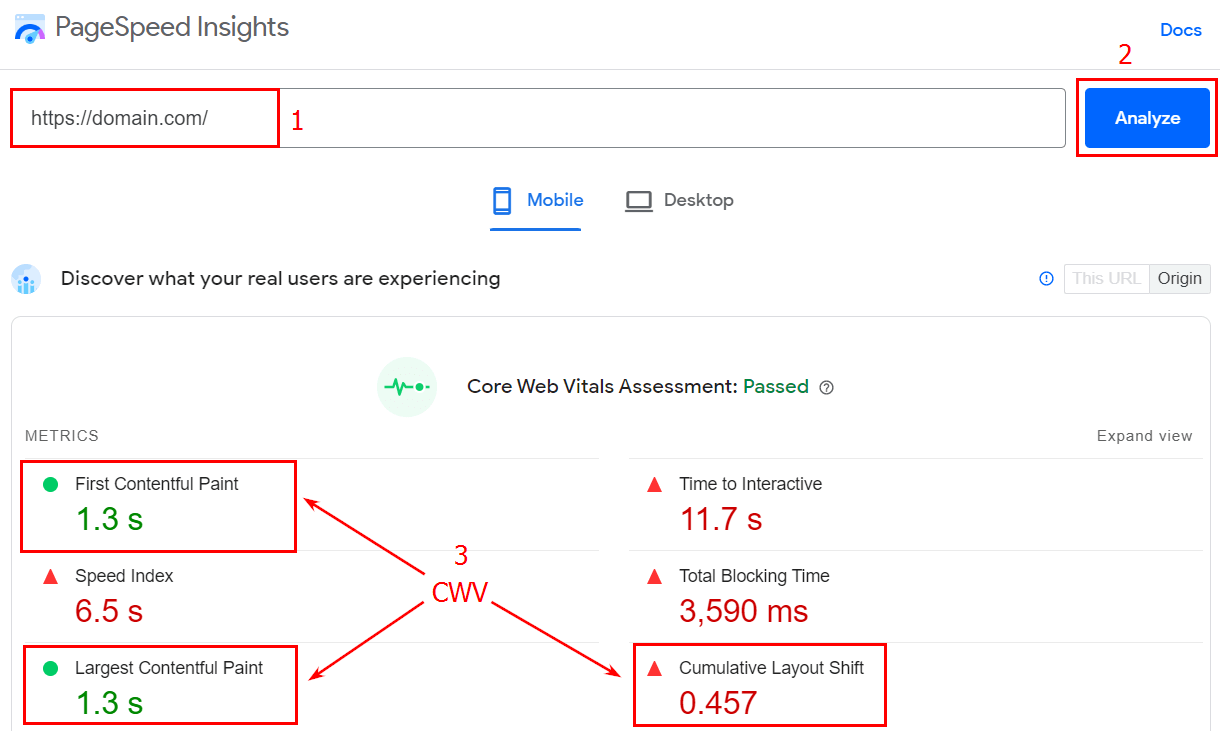
Google Chrome Lighthouse
Lighthouse is a website page quality analysis tool built into the Google Chrome browser. To use it, first open the developer console by pressing the keyboard shortcut Ctrl + Shift + C. Then select the ‘Lighthouse’ item in the menu → select the desired device type (Mobile or Desktop) → check the ‘Performance’ analysis category → click ‘Analyze page load’:
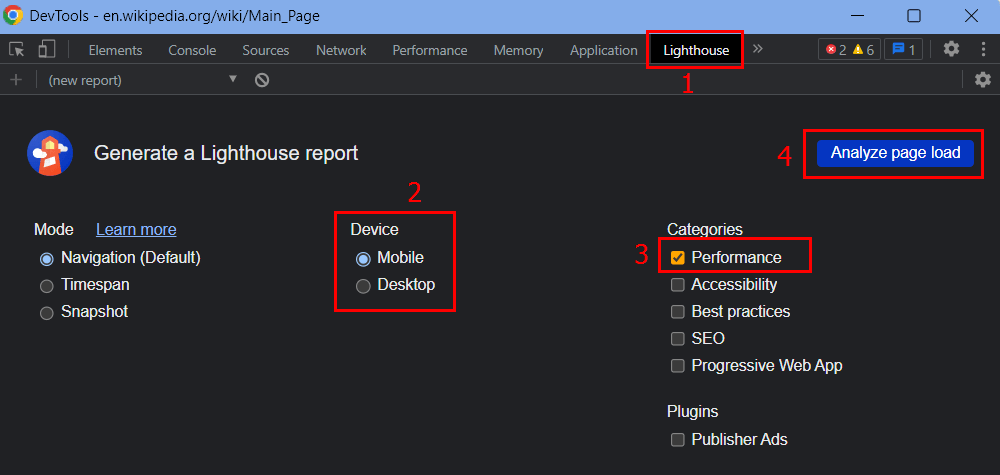
As a result of the analysis, we get an estimate of CWV indicators:
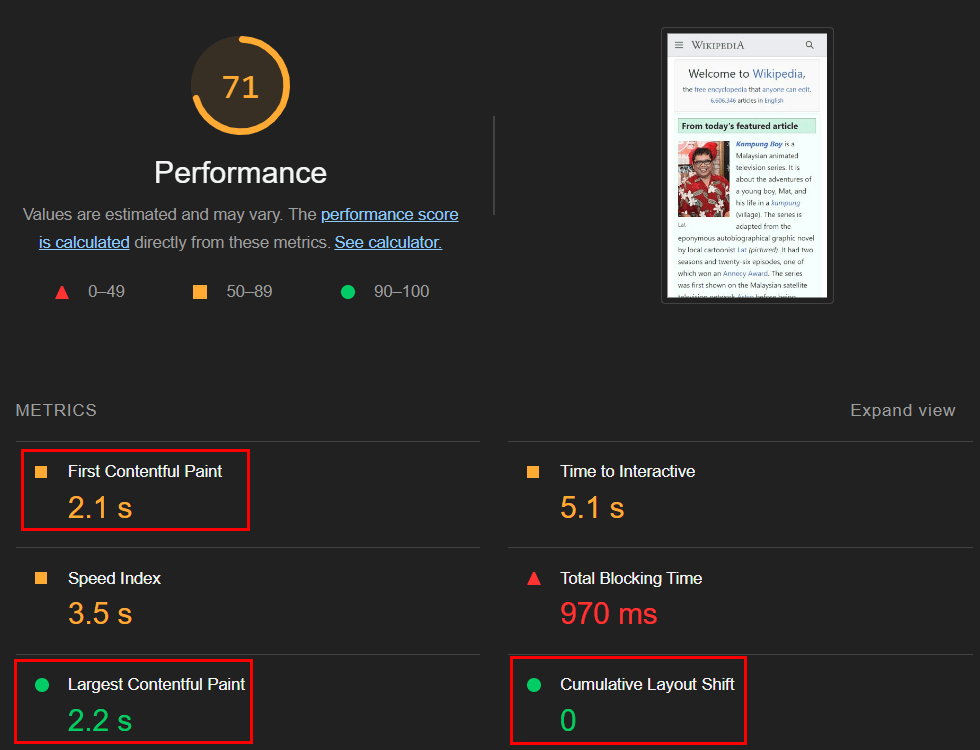
Browser plugin
The Core Web Vitals plugin can be installed for the Google Chrome browser. After installation, simply load the page of the desired website and click on the plug-in icon:
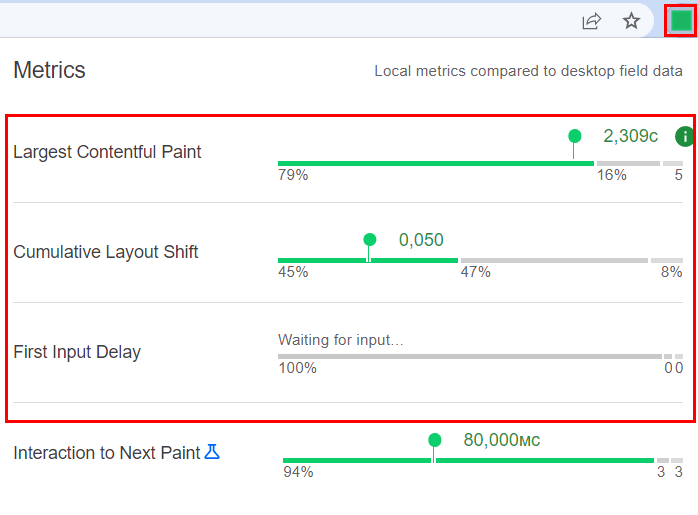
This is convenient if you need to quickly check a few pages, but you will not be able to check a large number of pages (for example, 100 or even 1000) this way.
Google Search Console
Google Search Console is an online tool designed by Google which contains a variety of reports of your website with the search engine. The ‘Core Web Vitals’ report contains graphs of the Core Web Vitals metrics of all indexed pages:

The report is absolutely free and gives you the opportunity to get CWV scores immediately for the entire list of pages. However, the report only contains data on indexed pages. If the website page is not in the Google index, then there will be no data on it.
Netpeak Checker
Netpeak Checker is a paid program developed by Netpeak Software. With its help, you can check the Core Web Vitals of any list of pages, regardless of whether they are in the Google index or not.
To check, first create a list of the required pages and add them to the program console. To do this, select the ‘List of URLs’ item in the top menu → select the ‘Enter manually …’ item → enter the list of URLs → Click the ‘Add’ button → select the required metrics (LCP, FID, CLS) → click the ‘Start’ button:
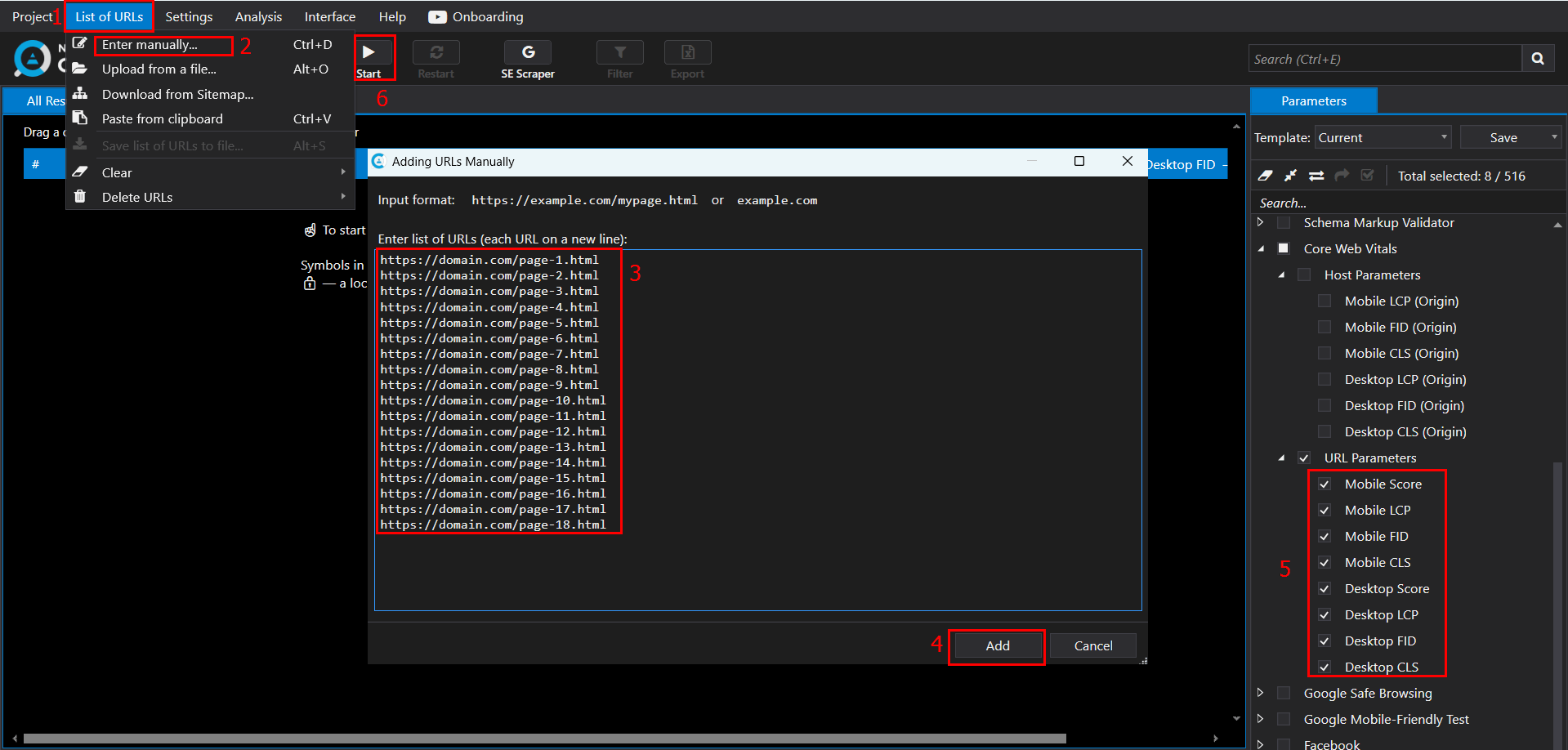
The result of the program has the form of a table with a list of URLs and indicators:

Conclusion
Core Web Vitals evaluate user experience and the convenience of the website for users. They are one of the criteria for evaluating the quality of a webpage. Separately, CWV (LCP, CLS, and FID) have no serious impact on the website's organic search rating, but in combination with other factors (content quality, external links, etc.), they can become an effective tool for improving the website's position in search rankings. Regularly checking these indicators and performing the necessary edits on the site to make improvements will result in better ranking in search results.



